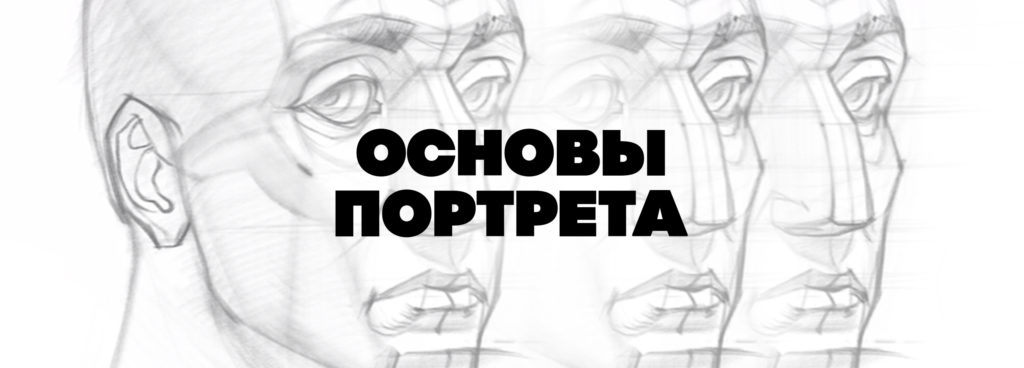
How do you learn how to draw a human head? Don’t be afraid to try! Lean on this detailed tutorial for beginners and boldly take your first steps into learning portraiture.
And, of course, come and learn at Skills Up School: we study anatomy, facial construction and plasticity step by step on the course
Portrait Sketching
– It is suitable for those who have basic pencil drawing skills.
The author of the tutorial is artist and founder of the school Azat Nurgaleev.
1. Draw a circle, add an arc and a jaw to it. We add the cylinder of the neck, looking for two reference points from it – the jugular fossa and the seventh cervical vertebra.
2. Divide the height of the head in half. The center is the middle of the “book” of the eye socket, the shape in which the eyes are located. Visually, it resembles a bound book.
3. Show where we have a fracture from the “book” of the eye socket to the lateral plane of the face. Separate the lateral plane of the face from the frontal plane.
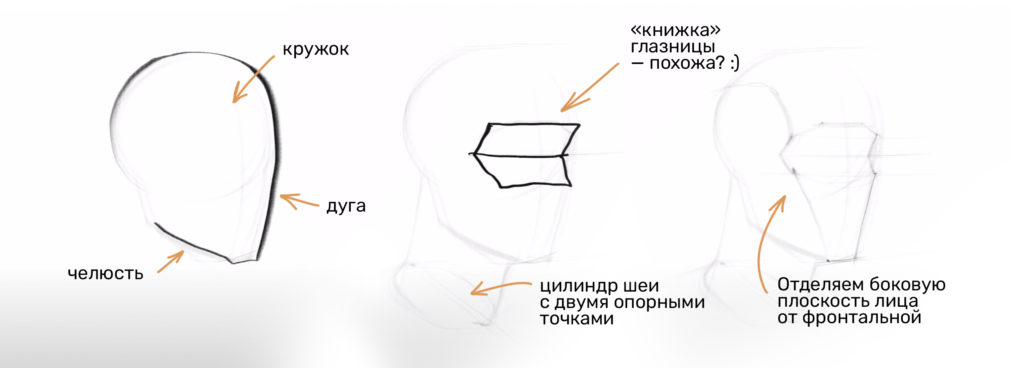
4. Build the head, divide the forehead into three planes: one frontal and two oblique.
5. Check proportions – find three basic modules on the face: the first – from the hairline to the eyebrows, the second – from the eyebrows to the base of the nose, the third – from the base of the nose to the chin.
6. Insert a rounded shape into the top of the eye socket “book” where the nose will come from. Mark its length and shape, show the trapezoid of the nose – its frontal and lateral parts.
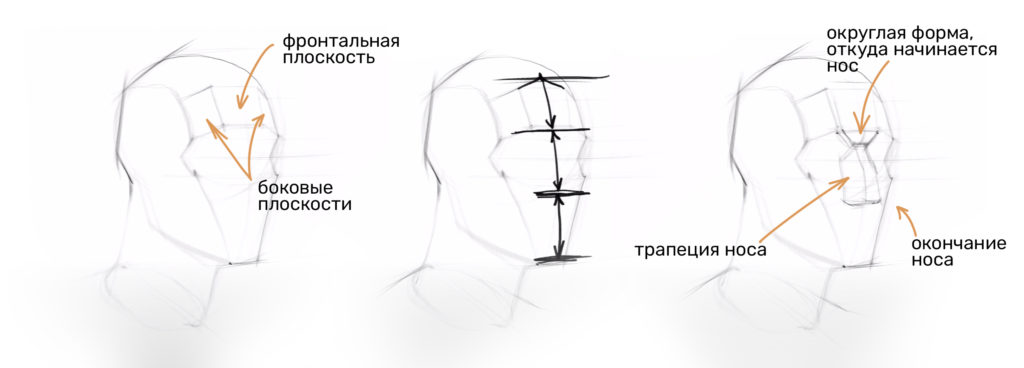
7. We divide into three parts the segment that remains from the base of the nose to the chin – the mouth line will be at the end of the first part, below – the lower lip and chin. We make the face silhouette more complex through the circular muscles of the mouth and refine the chin.
8. At eye level and the base of the nose, mark the ear. We specify the shape of the neck – it is always drawn with a slight inclination: so, if we look at a person in profile, we will see that the neck grows slightly forward.
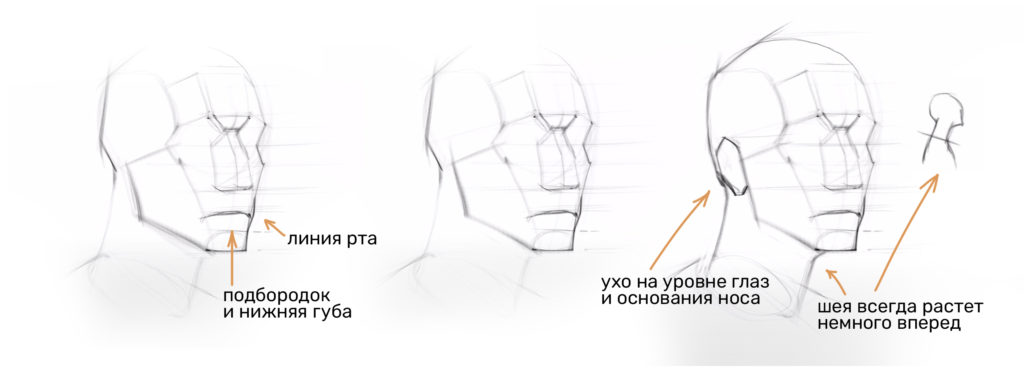
9. Mark the eyes, starting with the eyeballs – they are not located in the center of the eye socket, but shifted slightly upward to its outer edge.
10. Show the coverage of the upper and lower eyelids – they should have their own thickness, insert the ball of the eye socket. Don’t forget that the eye has a teardrop and outer edge, and the lower eyelid has volume.
11. Drawing the far eye. An important point: the distance between the eyes is approximately the size of one eye.
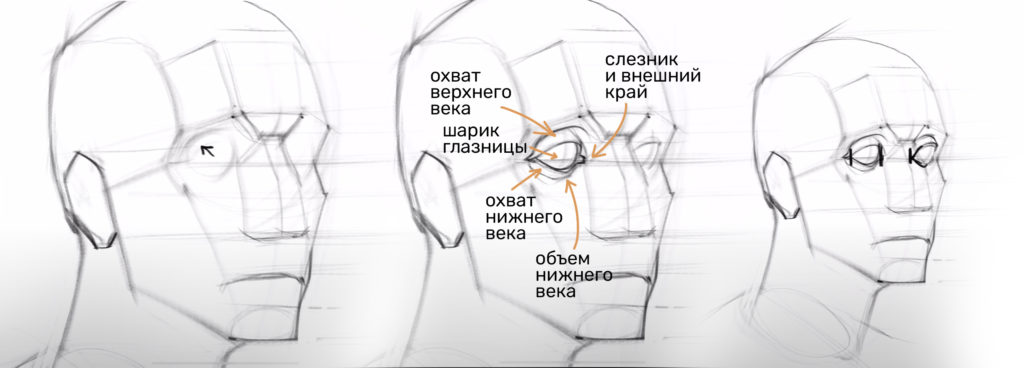
12. Refine the midline, lip and chin shape, zygomatic arch showing the shape fracture on the zygomatic bones.
13. We show the volume of the lateral plane of the nose and the eye sac, which nicely outlines the shape of the eye sockets.
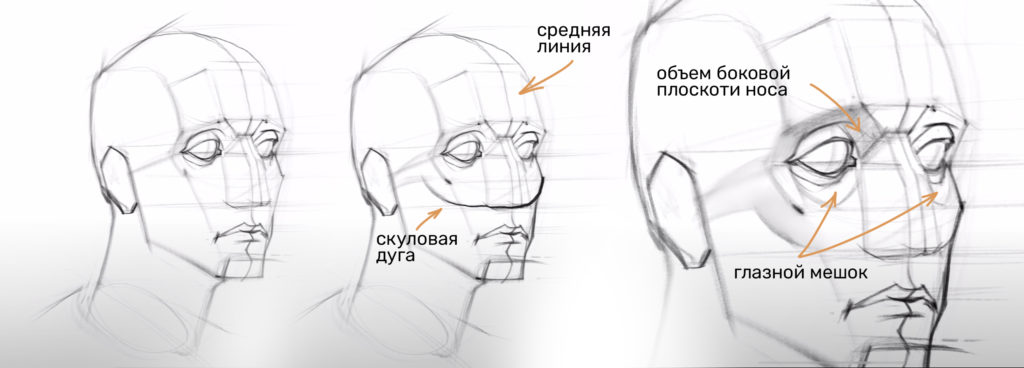
14. Showing how the supraorbital arches go, their volume.
15. Draw the eyebrow – its shape starts at the supraorbital arch and only then wraps around to the transition of the eye socket. Because of it is lit differently: it is darker at the base and then lightens.
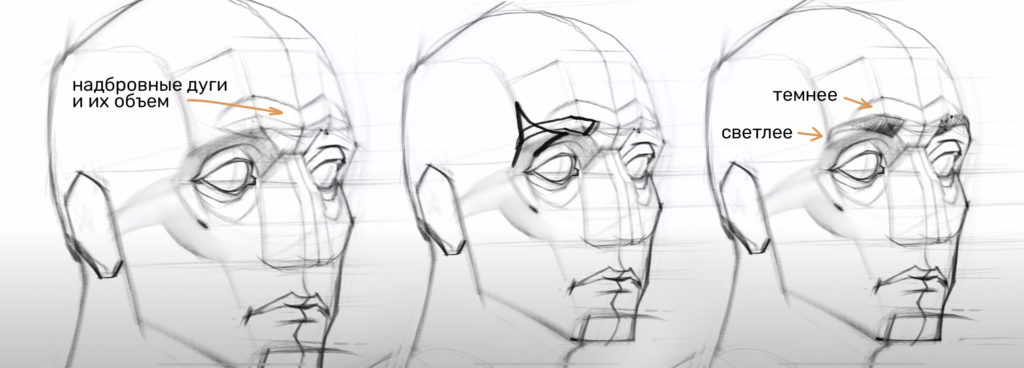
16. Show the wing of the nose, its volume and the shape of the nostril.
17. In the mouth area, we visualize the balloon and how the shadows fall on it: it turns out that the upper part remains in the light and the lower part is closed from the light.
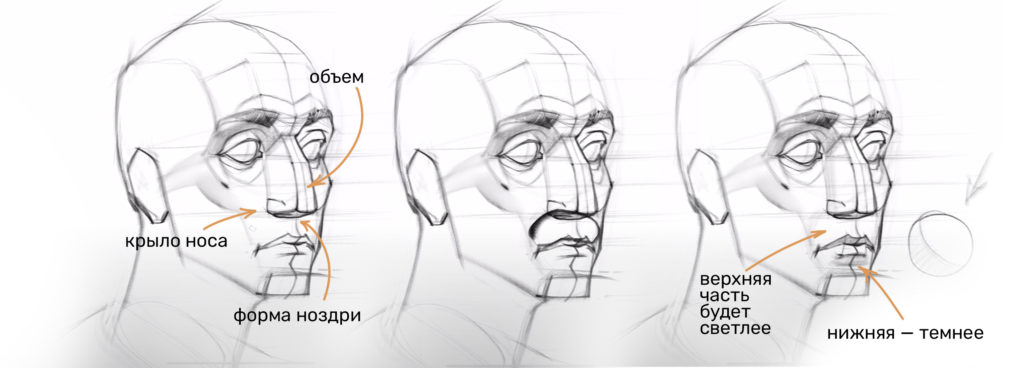
18. Cover the side planes of the nose and head with the tone. We outline the volume of the neck cubature, the falling shadows from the chin and nose.
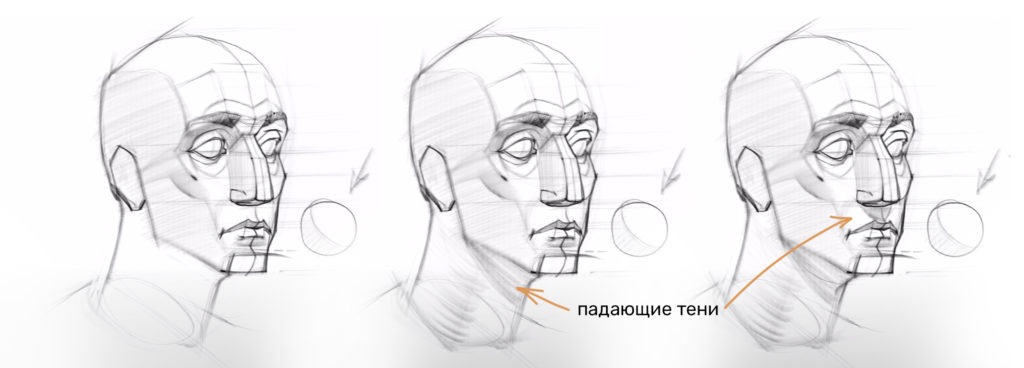
19. Insert iris with pupil, refine the shape of the ear.
20. The head has not only frontal and lateral planes, but also an inclined plane. We show the fracture from the oblique to the lateral plane to clarify the direction of the shape.
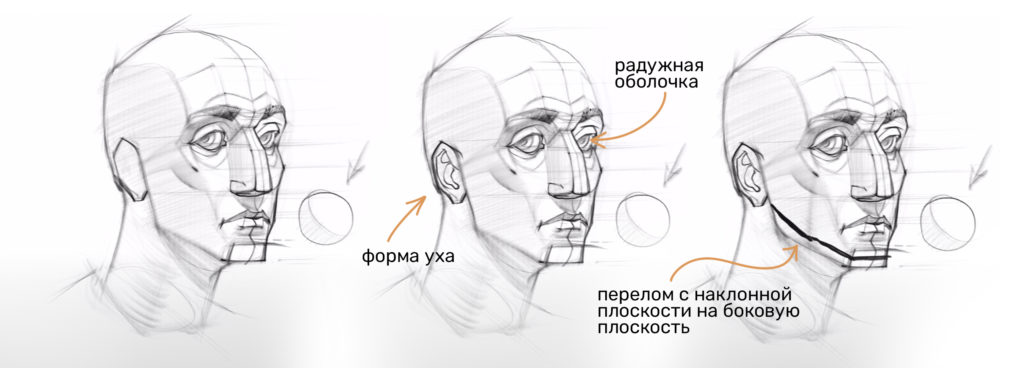
21. Adding tones. Done! We drew a human head step by step, we did good!
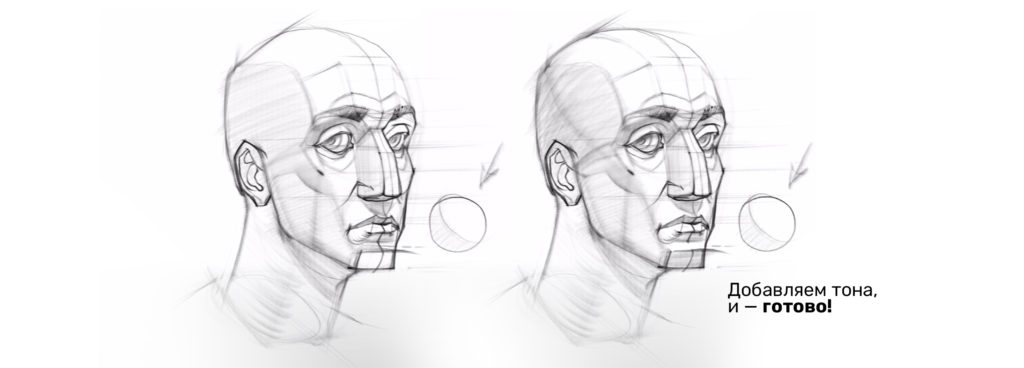
Skills Up School courses in drawing portraits and the human figure:
